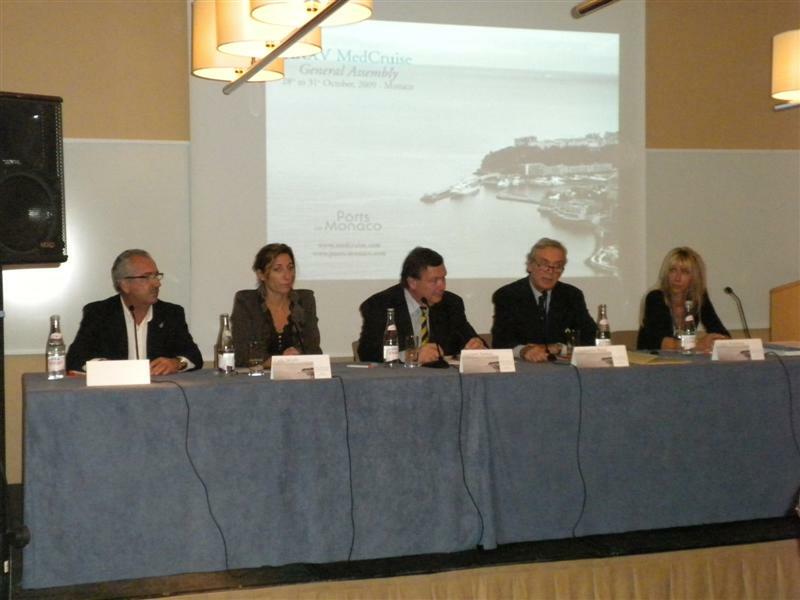
More than 100 delegates representing some 40 ports, plus several shipping agencies and executives from P&O, NCL, MSC, Costa, Star Clipper and V. Ships are participating in MedCruise’s general assembly in Monaco, beginning Oct. 29 to Oct. 31. The general theme will be “green” as much of the discussions will be focusing on the environment, according to MedCruise President Giovanni Spadoni, who also represents the port of Livorno.
As the host port, Monaco expects 260 calls in 2010, according to CEO Gianbattista Borea of Ports Monaco. Of those more than 80 will be turn-arounds, he said, compared to 36 this year. The cruise season in Monaco runs into December and will start again in April.
Borea said that he is focusing to build turn-around business, and also on luxury ships. Both are given preferential treatment. But he has not turned other ships away yet.
The industry impact on Monaco this year is estimated at 50 million euros.
Spadoni said that while the Western Mediterranean has maintained its 2008 passenger numbers, thanks to winter cruises, the Adriatic will be up 11 percent, due to Venice adding another berth, the Eastern Mediterranean is seeing modest growth, but the Black Sea is seeing a decline year-over-year.
The Mediterranean cruise industry is driven by a combination of more homeports, longer seasons and winter cruises, said Spadoni. He cited several examples of new homeports, including Monaco and Livorno, which are both having partial turn-arounds by Costa and MSC. These cruises, which are all season long, from spring to fall, draw from the local markets, but also from fly-in markets such as Germany using the air connections to Pisa and Nice.
Spadoni also said that increasingly restrictive emissions regulations along with fuel costs may start having a bigger impact on itinerary planning. However, with the new and bigger ships, he said that port congestion becomes less of an issue, since there are fewer ships to berth.
Meanwhile, MedCruise is working to benchmark best practices for all of its port members to help standards for service and cost levels.



